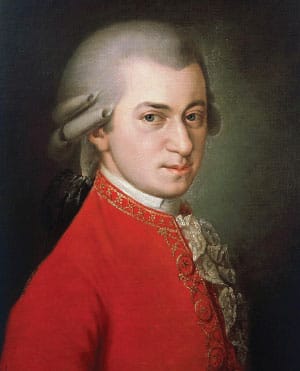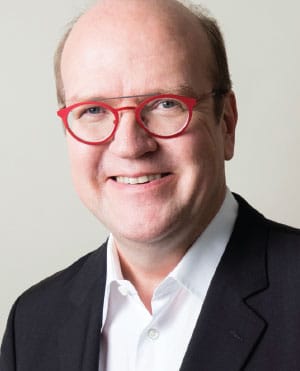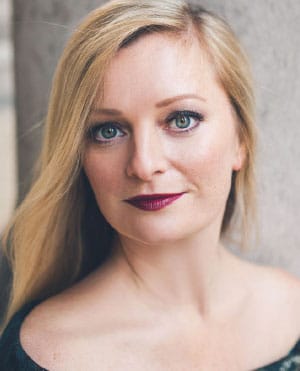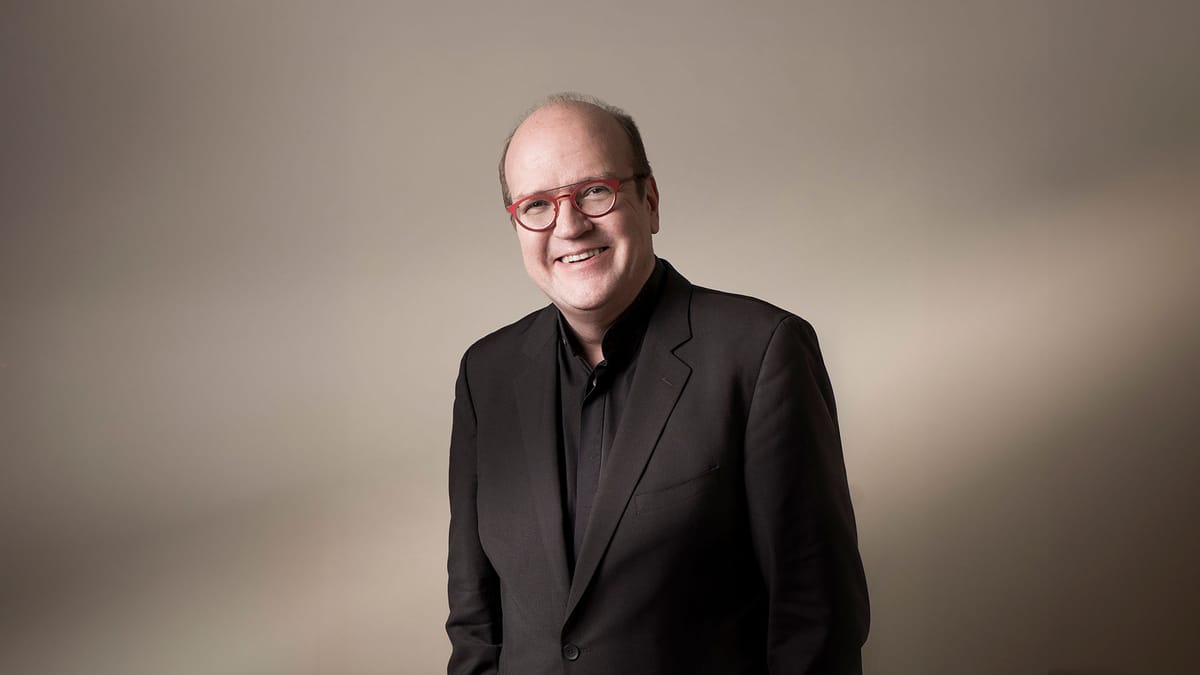In This Program
The Concert
Thursday, November 21, 2024, at 2:00pm
Friday, November 22, 2024, at 7:30pm
Saturday, November 23, 2024, at 7:30pm
Preconcert talk with Scott Foglesong: on stage Thursday at 1:00pm
Bernard Labadie conducting
Wolfgang Amadeus Mozart
Overture to La clemenza di Tito, K.621 (1791)
Rondo, “Al desio, di chi t’adora,” K.577 (1789)
“Ruhe sanft, mein holdes Leben,” from Zaide, K.344 (1780)
Lucy Crowe soprano
Masonic Funeral Music, K.477 (1785)
“Schon lacht der holde frühling,” K.580 (1789)
First San Francisco Symphony Performances
Lucy Crowe
Intermission
“Venga la morte . . . Non temer, amato bene,” K.490 (1786)
First San Francisco Symphony Performances
Lucy Crowe
Alexander Barantschik violin
Symphony No. 39 in E-flat major, K.543 (1788)
Adagio–Allegro
Andante con moto
Menuetto–Trio
Finale: Allegro
Bernard Labadie’s appearance is supported by the Louise M. Davies Guest Conductor Fund.
These concerts are generously sponsored by the Athena T. Blackburn Endowed Fund for Russian Music.
These concerts are sponsored by the Joseph Padula Memorial Fund, the James J. Parker Mostly Mozart Fund, and the Fay & Ada Tom Family Fund for Guest Artists.
Thursday matinee concerts are endowed by a gift in memory of Rhoda Goldman.
Program Notes
At a Glance
Overture to La clemenza di Tito, K.621
Wolfgang Amadeus Mozart
Born: January 27, 1756, in Salzburg
Died: December 5, 1791, in Vienna
Work Composed: 1791
SF Symphony Performances: First—January 1962. Enrique Jordá conducted. Most recent—June 1991. Roger Norrington conducted.
Instrumentation: 2 flutes, 2 oboes, 2 clarinets, 2 bassoons, 2 horns, 2 trumpets, timpani, and strings
Duration: About 5 minutes

Our concert begins at the end—or very nearly the end—of Mozart’s too-short life. He had no inkling in the summer of 1791 that he would not live to the new year; in fact, his life and career seemed headed in a good direction. A commission arrived from the Bohemian Estates in Prague for an opera to celebrate the coronation of Leopold II, succeeding the late Joseph II. The festivities were to take place in September in Prague, and it was decided that the central operatic spectacle was to be a grand, formal one—an opera seria.
Mozart was not the first or second choice for the assignment, but when Antonio Salieri and Domenico Cimarosa proved unavailable, he was standing in the wings to compose La clemenza di Tito (The Clemency of Titus), a tale of love, politics, and mercy in ancient Rome. It opened in Prague on September 6, scoring a modest success. Audiences warmed to it and by September 30, the final night of its run, it grew into a popular hit. By then Mozart had returned to Vienna to prepare for the premiere of Die Zauberflöte (The Magic Flute). As he wrote on October 7/8 to his wife, who was at the spa in Baden, “It’s the strangest thing, but the same evening that my new opera was given here for the first time with such applause, Tito had its final performance in Prague, also with extraordinary applause.” He died two months and a week later, leaving his wife (with their two sons) to fend as best she could. One of the ways she raised money was by mounting benefit performances of La clemenza di Tito in various German and Austrian cities, where it invariably met with great approval.
—James M. Keller
Rondo, “Al desio di chi t’adora,” K.577
Wolfgang Amadeus Mozart
Work Composed: 1789
SF Symphony Performances: First—January 1987. Iván Fischer conducted with Sheri Greenawald as soloist. Most recent—January 2015. Paul Goodwin conducted with Lydia Teuscher as soloist.
Instrumentation: soprano, 2 basset horns, 2 horns, 2 bassoons, and strings
Duration: About 6 minutes
We tend to think of opera scores as more-or-less rigid, but in Mozart’s day they were open to substantial adjustment from production to production to meet the expectations of audiences at specific theaters or the desires of new singers taking over a part. Mozart’s catalogue includes 20 operas (two of them incomplete) and 58 further arias (or recitative-plus-aria couplings). Many of these were written for specific singers to use in concerts or to insert into operas in which they were performing. More than a dozen of them were meant to replace identified arias in operas by Mozart himself or by other composers.
When he and librettist Lorenzo Da Ponte unveiled Le nozze di Figaro (The Marriage of Figaro), in 1786, the clever chambermaid Susanna was portrayed by the composer’s friend Nancy Storace. The role had been crafted to spotlight her comic gifts and molded specifically to her voice—even altered to accommodate vocal problems she was experiencing. Figaro was staged again in Vienna in August 1789, and Mozart altered the score to accommodate the new Susanna, Adriana Ferrarese del Bene. She was Da Ponte’s mistress, and it was perhaps this status that emboldened her to complain that the role of Susanna did not rival that of Countess Almaviva. She wanted music she hoped would place her on an emotional plateau closer to that of the Countess, and took aim at two arias she deemed insufficient to her needs: “Venite, inginocchiatevi” and “Deh vieni, non tardar,” the latter being replaced by “Al desio di chi t’adora,” a more imposing aria in which bravura passages spotlighted the soprano’s virtuosic ability.
The action is set in a garden, and the outdoor flavor is enhanced by warbling obbligato contributions from basset horns (tenor clarinets) and bassoons, which, along with the horns, evoke the feeling of a plein-air wind serenade. The orchestral sound in this Rondo is further broadened by Mozart’s instructions to the string section. In the opening Larghetto, he has the violins play with mutes to create a distant, hazy sound, and near the end of that section he has the first violins play pizzicato arpeggios, suggesting the sound of a mandolin.
—J.M.K.
“Ruhe sanft, mein holdes Leben,” from Zaide, K.344
Wolfgang Amadeus Mozart
Work Composed: 1779–80
SF Symphony Performances: First—February 1985. David Milnes conducted with Sally Wolf as soloist Most recent—January 2015. Paul Goodwin conducted with Lydia Teuscher as soloist.
Instrumentation: soprano, oboe, bassoon, and strings
Duration: About 6 minutes
In January 1778, Mozart wrote from Mannheim to tell his father, Leopold, about a development he had heard about: “I know for sure that the Emperor has in mind to establish a German opera company in Vienna; and that he is seriously looking for a young Kapellmeister who knows German, is talented and capable of producing something novel in the world.” Leopold got busy working his contacts in Vienna and was advised that although Wolfgang didn’t stand a chance for a court appointment, he might raise his profile by writing a German comic opera and submitting it to the emperor for consideration.
Back in Salzburg a year later, with his friend Johann Andreas Schachtner serving as librettist, Wolfgang accordingly embarked on a German opera intended to capitalize on the craze for “Turkish” plots—here involving Europeans marooned and enslaved in a Muslim country. Mozart completed 16 musical movements—about 70 minutes of material—but he abandoned it when he settled in Vienna in 1781. It appears that none of the music was ever performed during his lifetime, and the score remained unpublished until the 1830s, when it was released under the title Zaide, after the lead female character. Her first aria, “Ruhe sanft, mein holdes Leben,” has become an exquisite staple of the lyric soprano repertoire, a graciously paced aria in an airy style.
—J.M.K.
Masonic Funeral Music, K.477
Wolfgang Amadeus Mozart
Work Composed: 1785
SF Symphony Performances: First—April 1939. Pierre Monteux conducted. Most recent—January 2005. Michael Tilson Thomas conducted.
Instrumentation: 2 oboes, clarinet, 3 basset horns, contrabassoon, 2 horns, and strings
Duration: About 5 minutes
In Mozart’s time, Freemasonry was allied with the progressive liberalism that made the Enlightenment such a critical chapter in European history. The movement enjoyed relative freedom under Joseph II, although he kept the Masonic lodges under surveillance all the same. In late 1784, Mozart was accepted as an Apprentice Mason, and two years later he was raised to the status of Master Mason. At their twice-weekly meetings, Mozart and his fellow Masons were offered an array of activities, often involving music.
Mozart composed 10 pieces specifically for Masonic use, most of them being songs, cantatas, or choruses for men’s voices. The only instrumental work from his Masonic output is the piece performed here, and it didn’t start out in that form. He wrote it in July 1785 for a ceremony marking the elevation of a visiting Masonic brother to the rank of Master, at that point titling it Meistermusik, using men’s voices and orchestra. That November, two prominent Masons passed away in quick succession, and Mozart revised his Meistermusik into what he retitled Maurerische Trauermusik (Masonic Funeral Music). For the memorial service, Mozart eliminated the voices but retained his orchestration of two oboes, clarinet and basset horn, two horns, and strings. Not long after, probably in December, a further performance was scheduled, and for this he changed the orchestration, adding parts for two further basset horns and a contrabassoon. This yielded an unusually dark sound that intensified what was already a somber piece. The piece may remind listeners of the music sung by the Two Men in Armor at the beginning of the trial scene in Die Zauberflöte, a work that is replete with Masonic symbolism and significance.
—J.M.K.
“Schon lacht der holde Frühling,” K.580
Wolfgang Amadeus Mozart
Work Composed: 1789
First SF Symphony Performances
Instrumentation: soprano, 2 clarinets, 2 bassoons, 2 horns, and strings
Duration: About 8 minutes
In 1789, plans were afoot in Vienna to mount a new production—in German—of Giovanni Paisiello’s immensely popular opera Il barbiere di Siviglia (The Barber of Seville), which had swept through all of opera-loving Europe since its premiere in 1782. (It would eventually be overshadowed by Rossini’s setting of 1816.) We don’t know why the plans in Vienna did not come to fruition, but we do know that the soprano lead was to be sung by Josepha Hofer and that Mozart was composing the aria “Schon lacht der holde Frühling” for her to interpolate into Paisiello’s score, probably as a showpiece for her music-lesson scene.
Born Josepha Weber, she was the eldest of the four Weber sisters the 21-year-old Mozart had met during a stay in Mannheim. He had a crush on the second, Aloysia, and ended up marrying the third, Constanze, so Josepha was Wolfgang’s sister-in-law. Her career led to Vienna, where she was the leading coloratura soprano for a company based at the Theater auf der Wieden, noted for a high tessitura and an edgy tone. That would prove perfect for the character Mozart created for her in 1791—the Queen of the Night in Die Zauberflöte. He had effectively completed the aria for Il barbiere di Siviglia but abandoned his work when the production fell through, leaving some of the orchestration to be filled in by later editors.
—J.M.K.
“Venga la morte . . . Non temer, amato bene,” K.490
Wolfgang Amadeus Mozart
Work Composed: 1786
First SF Symphony Performances
Instrumentation: soprano, solo violin, 2 clarinets, 2 bassoons, 2 horns, and strings
Duration: About 8 minutes
“Non temer, amato bene” was similarly an insertion aria. Mozart’s opera seria Idomeneo was premiered in 1781 in Munich. He did not return home to Salzburg following its brief initial run but proceeded instead to Vienna, where his Salzburg employer, Prince-Archbishop Colloredo, was settling in with his attendants for the coronation of Emperor Joseph II. Within a few weeks their antipathy reached a breaking point and Mozart was dismissed. He decided to stay in Vienna, which would remain his home throughout his final glorious decade. He included an aria from Idomeneo in a concert in 1783, but the opera would be mounted only once more during his lifetime. In March 1786, it was given in at least once at the Vienna palace of Prince Johann Adam von Auersperg, in a production starring accomplished amateurs that may have been staged (at least it had sets), and that may have accommodated some members of the public in addition to invited aristocrats.
Among the revisions Mozart effected for this event was the addition of two new numbers, including this scena and rondo for singer with obbligato violin. The role of Idamante, son of the title character, was originally portrayed by a castrato, but in 1786 the part was sung by a tenor, and sopranos and mezzo-sopranos also lay legitimate claim to the part today. Finding himself in a dilemma that requires him to renounce his love for the woman he loves, Idamante would prefer death since he cannot imagine lavishing his affections on another.
—J.M.K.
Symphony No. 39 in E-flat major, K.543
Wolfgang Amadeus Mozart
Work Composed: 1788
SF Symphony Performances: First—November 1913. Henry Hadley conducted. Most recent—August 2021. Xian Zhang conducted.
Instrumentation: flute, 2 clarinets, 2 bassoons, 2 horns, 2 trumpets, timpani, and strings
Duration: About 30 minutes
Mozart’s last three symphonies—Nos. 39, 40 (Great G minor), and 41 (Jupiter)—are among the first symphonies fully in the sense we know today. His 40 or so earlier efforts include some gems, but were written either for social occasions that likely included chitchat during the music, or were intended as lead-ins for arias and concertos, which were the star genres of the time. For most of the 18th century, symphonies were decorative and disposable. It’s no wonder Mozart’s catalogue is speckled with lost, dubious, and misattributed ones.
Yet in about nine weeks over the summer of 1788, he wrote these three final symphonies embracing an idiosyncratic personal vision. By the early 19th century, following further development by the aged Haydn and young Beethoven, an encyclopedia could define a symphony as “every perfection that can render instrumental music interesting and sublime: invention, science, knowledge of instruments, majesty, fire, grace, and pathos by turns, with new modulations, and new harmonies.” Such a conception would have been completely alien to a musician just 30 years earlier.
In 1788, Mozart found himself at a personal and professional low. His father Leopold had died the previous year, an infant daughter died that June, and he had gradually fallen out of touch with his once-beloved sister, Nannerl. Meanwhile, war with the Ottoman Empire depressed the Austrian economy and put a damper on musical life. Mozart’s income dropped almost 75 percent from the previous year, and he moved to a cheaper apartment and took on debt. Looking to revive his fortunes, he probably wrote the three symphonies for a planned concert series in Vienna, which doesn’t seem to have taken place. It was long thought they weren’t performed at all during his life, but circumstantial evidence now points to several performances in the years before his unexpected death in 1791.
Appraising Mozart’s legacy just a few years after his passing, an anonymous German critic observed, “Mozart’s talent appears to me to be an original spirit, one which in any case is still searching for compositions which are bizarre, striking and paradoxical, melodically as well as harmonically, and avoids natural flow so as not to become common.” The writer might well have been reacting specifically to the last symphonies. Even some contemporary scholars, including Rose Rosengard Subotnik and Neal Zaslaw, describe them as “irrational” or “illogical”—positing a conscious rejection of classical niceties, perhaps motivated by social and economic dissatisfaction, or by release from his late father’s conservative guidance.
The Music
Mozart’s Symphony No. 39 is less famous than its two siblings (maybe for lack of a catchy nickname). But it’s set in E-flat major—a favorite Mozart key—and is arguably the most daring of the bunch. For the only time, Mozart replaces oboes with clarinets, giving a slight chilliness to the orchestration. The sturdy opening chords dissolve into questioning scales, and the main Allegro contrasts an elegant 3/4 theme with an irritable forte reaction.
The Andante is more demure, yet it periodically inflects toward minor, suggesting a conflicted heart. The Menuetto, based on an Austrian Ländler dance, has a surprising severity, with rising arpeggios that recall the questioning scales of the first movement. The trio section has a memorable clarinet duet with one playing high, and the second accompanying in the lowest register.
The Finale throws around a catchy tune, first in the strings, and then between strings and winds. The scampering tempo and playful scoring are at odds with a dark undercurrent—it sounds like someone trying to be cheerful while hiding pain. The movement ends on a weak beat with the last measure empty, like the whole symphony falls off a cliff.
—Benjamin Pesetsky
A previous version of this note appeared in the program book of the Melbourne Symphony.
Mozart Aria Text
Al desio, di chi t’adora
Al desio di chi t’adora,
vieni, vola, oh mia speranza!
morirò! se indarno ancora
tu mi lasci sospirar.
Le promesse, i giuramenti,
deh! rammenta, oh mio tesoro!
e i momenti di ristoro,
che mi fece Amor sperar!
Al desio di chi t’adora,
vieni, vola, oh mia speranza!
morirò! se indarno ancora
tu mi lasci sospirar.
Ah ch’omai più non resisto
all’ardor che il sen m’accende.
Chi d’amor gli affetti intende,
compatisca il mio penar.
At the wish of one who adores you,
Come, fly hither, my hope!
I shall die if you make me sigh
In vain any longer.
The promises, the vows,
O remember them, my treasure,
And those moments of delight
Which love led me to hope for.
At the wish of one who adores you,
Come, fly hither, my hope!
I shall die if you make me sigh
In vain any longer.
Ah, I can no longer resist
The ardor that sears my breast.
Let him who understands love's anguish
Feel my pain with me.
Ruhe sanft, mein holdes Leben
Ruhe sanft, mein holdes Leben,
schlafe, bis dein Glück erwacht;
da, mein Bild will ich dir geben,
schau, wie freundlich es dir lacht:
Ihr süssen Träume, wiegt ihn ein,
und lasset seinem Wunsch am Ende
die wollustreichen Gegenstände
zu reifer Wirklichkeit gedeihn.
Rest gently, my dear life,
sleep until your joy awakes.
Here, I give you my portrait.
See how it smiles at you.
Sweet dreams, rock him to sleep,
and finally grant his wish,
so that his desire
will become reality.
Schon lacht der holde Frühling
Schon lacht der holde Frühling
auf blumenreichen Matten,
wo sich Zephire gatten
unter geselligem Scherze.
Wenn auch auf allen Zweigen
sich junge Blüten zeigen,
kehrt doch kein leiser Trost\
in dieses arme Herz.
Da sitze ich und weine
einsam auf der Flur,
nicht um mein verlornes Schäfchen,
nein, um den Schäfer Lindor nur.
Now the gentle spring smiles
on meadows rich with flowers,
where gentle breezes mingle
in playful company.
Though young blossoms appear
on every branch,
no quiet comfort returns
to this poor heart.
I sit here and weep,
alone in the field,
not for my lost little sheep,
but only for the shepherd Lindor.
Venga la morte . . . Non temer, amato bene
Venga la morte, intrepida l’attendo, ma, ch’io possa struggermi ad altra face, ad altr’oggetto donar gl’affetti miei? Come tentarlo? Ah, di dolor morrei!
Non temer, amato bene,
Per te sempre il cor sarà.
Più non regge a tante pene,
L’alma mia mancando va.
Tu sospiri? o duol funesto!
Pensa almen, che istante è questo!
Non mi posso, oh Dio! spiegar.
Stelle barbare, stelle spietate,
Perché mai tanto rigor?
Alme belle, che vedete
Le mie pene in tal momento,
Dite voi, s’egual tormento
Può soffrir un fido cor!
Let death come, I will await it fearlessly. But to offer my longing and affection to another—how could I attempt that? Ah, I would die of grief!
Fear not, beloved,
My heart is yours forever.
I can no longer bear such pain,
My soul is fading away.
You sigh? O bitter sorrow!
Only think of what a moment this is!
O God, I cannot explain.
Cruel stars, pitiless stars!
Why so harsh?
Kind souls, who see
My anguish at this moment,
Tell me if a faithful heart
Can suffer such torment!
Supertitles: Ron Valentino
About the Artists

Bernard Labadie
Bernard Labadie has established himself worldwide as one of the preeminent conductors of the Baroque and Classical repertoire, a reputation closely tied to his work with Les Violons du Roy, for which he served as music director from its inception until 2014, and La Chapelle de Québec. With these two ensembles he has regularly toured North America and Europe, including appearances at Carnegie Hall, Walt Disney Concert Hall, the Kennedy Center, the Barbican, the Concertgebouw, and the Salzburg Festival. He is also principal conductor of the Orchestra of St. Luke’s in New York.
Recent appearances include the Chicago Symphony, Cleveland Orchestra, Handel and Haydn Society, National Arts Center Orchestra, Montreal Symphony, Monte-Carlo Philharmonic, Orchestre National de Lyon, Mozarteum Orchestra Salzburg, and NDR Radiophilharmonie. He has also worked with the Philadelphia Orchestra, Los Angeles Philharmonic, New York Philharmonic, Bavarian Radio Orchestra, Academy of Ancient Music, English Concert, Orchestra of the Age of Enlightenment, BBC Royal Scottish National Orchestra, and Royal Concertgebouw Orchestra, among others. He made his San Francisco Symphony debut in April 2005.
His extensive discography on the Dorian, ATMA, and Virgin Classics labels includes Handel’s Apollo e Dafne and a collaborative recording of Mozart’s Requiem with Les Violons du Roy and La Chapelle de Québec, both of which received Canada’s Juno Award. Other recordings include C.P.E. Bach’s complete cello concertos with Truls Mørk and Les Violons du Roy, J.S. Bach’s complete piano concertos with Alexandre Tharaud, and Haydn’s piano concertos with Marc-Andre Hamelin.
He has received Paris’s Samuel de Champlain Award, the Canadian government’s Officer of the Order of Canada, and the Chevalier de l’Ordre National du Québec.

Lucy Crowe
Lucy Crowe has sung at the Glyndebourne Festival, English National Opera, Teatro Real Madrid, Deutsche Oper Berlin, and Bavarian State Opera, in repertoire ranging from Purcell, Handel, and Mozart to Donizetti, Verdi, and Janáček. Recent highlights include Musetta in La Bohème and Poppea in Agrippina at the Royal Opera House, Susanna in Le nozze di Figaro at the Metropolitan Opera, and the title role in Rodelinda with the English Concert at Carnegie Hall. She makes her San Francisco Symphony debut with this program.
This season, Crowe also appears in Brahms’s German Requiem with the Bavarian Radio Symphony and Simon Rattle, gives recitals at Wigmore Hall, and makes her role debut as Malinka/Etherea/Kunka in Janáček’s The Excursions of Mr. Brouček at the Deutsche Staatsoper Berlin and in concert with the London Symphony and Rattle. She has previously appeared with the Berlin Philharmonic, Vienna Philharmonic, City of Birmingham Symphony Orchestra, Orchestra of the Age of Enlightenment, Cleveland Orchestra, and Los Angeles Philharmonic. She received a Grammy nomination in 2021 for Best Opera Recording for Janáček’s The Cunning Little Vixen with the London Symphony and Rattle.
Born in Staffordshire, England, Crowe studied at the Royal Academy of Music, where she is a fellow. She was made an OBE in the 2023 King’s Birthday Honours.
Preconcert Talk (on stage Thursday at 1:00pm):
Scott Foglesong is chair of music theory and musicianship at San Francisco Conservatory of Music and a contributing writer to the San Francisco Symphony.




